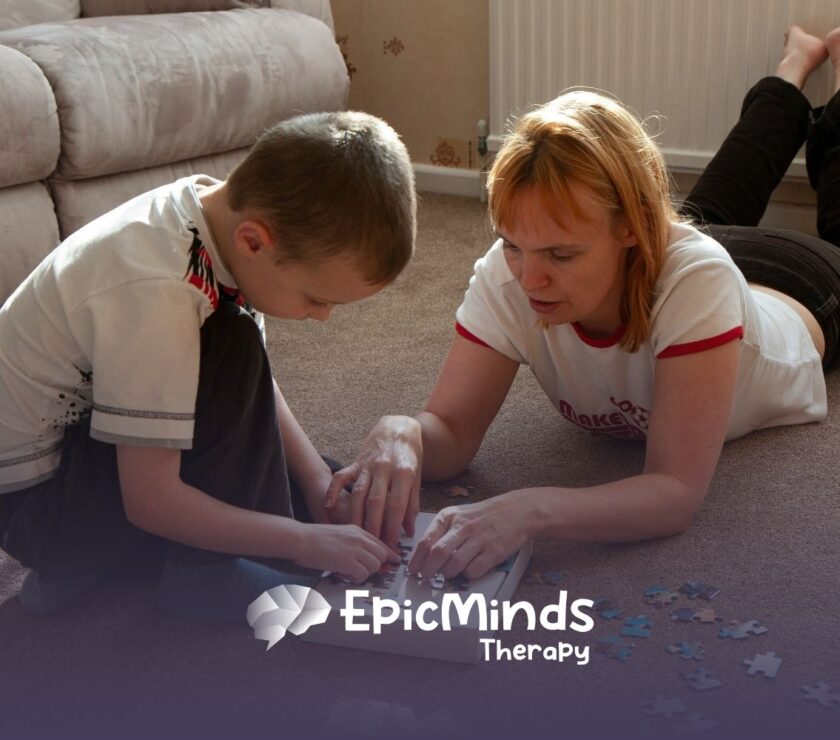Applied behavior analysis, or ABA therapy, has earned its reputation as the gold-standard intervention for children on the autism spectrum. Across Maryland and North Carolina, families and professionals often search for ABA therapy success stories to understand how this data-driven approach transforms lives. In this article, readers will discover the core principles that underpin ABA’s effectiveness, explore key techniques, review compelling research findings, and meet families and practitioners who have witnessed remarkable progress firsthand.
Defining Core Principles
Successful ABA therapy rests on a handful of foundational components. These elements guide therapists as they tailor interventions, track outcomes, and collaborate with caregivers and educators.
Individualized Treatment Plans
Each learner follows a unique path, so behavior analysts begin with a thorough assessment of strengths, needs, and preferences. From there, they set clear, measurable goals—whether it’s increasing spoken language, reducing self-injurious behavior, or teaching daily living skills. Personalized plans ensure that the intervention fits the child rather than forcing the child to fit a rigid protocol.
Data-Driven Positive Reinforcement
ABA relies on continuous measurement. Therapists record responses to teaching trials in real time, then use that information to reinforce desired behaviors. Positive reinforcement—such as praise, tokens, or access to a favorite toy—encourages repetition of targeted skills. Over time, data patterns reveal which reinforcers work best and when to fade prompts.
Consistency Across Environments
Progress gained in the therapy room can stall if strategies aren’t applied elsewhere. That’s why successful programs involve parents, teachers, and paraprofessionals. Consistency across home, school, and community settings helps children generalize skills so they become part of everyday life.
Multidisciplinary Collaboration
Behavior analysts often partner with speech-language pathologists, occupational therapists, and medical professionals. This team approach ensures that all aspects of a child’s development—communication, motor planning, sensory integration—receive coordinated support. Regular case conferences keep everyone on the same page.
Ongoing Training and Support
Therapists and families benefit from continuous coaching. Supervision by a Board-Certified Behavior Analyst (BCBA) includes feedback on implementation, data interpretation, and goal adjustment. When caregivers feel confident using ABA strategies at home, gains solidify more quickly.
Highlighting Key Techniques
ABA therapy encompasses a spectrum of methods. Below is a comparison of three widely used approaches, each demonstrating how teaching can adapt to a child’s individual needs.
| Technique | Structure Level | Setting | Reinforcement Style |
| Discrete Trial Training | Highly structured | One-on-one station | Tangible or edible rewards |
| Pivotal Response Treatment | Moderately loose | Play-based, natural | Social or activity rewards |
| Early Start Denver Model | Integrated | Daily routines | Embedded play-based rewards |
Discrete Trial Training
One of the earliest ABA modalities, Discrete Trial Training (DTT) breaks skills into small steps. A therapist presents a clear instruction, prompts as needed, and delivers immediate reinforcement. Although early versions included aversive methods, modern DTT relies exclusively on positive reinforcement. This structured format can produce rapid gains in foundational skills, especially in language and imitation.
Pivotal Response Treatment
Pivotal Response Treatment (PRT) shifts learning into natural contexts. A therapist follows a child’s lead, embedding teaching opportunities within play and daily activities. By targeting pivotal areas such as motivation and self-management, PRT often yields widespread improvements across multiple behaviors, reducing the need for intensive prompts.
Early Start Denver Model
The Early Start Denver Model (ESDM) blends play-based routines with conventional ABA techniques. Sessions occur in natural environments with multiple learning goals addressed simultaneously. ESDM has demonstrated strong outcomes in social communication and adaptive behaviors for toddlers when delivered intensively.
Showcasing Research Evidence
Decades of empirical studies confirm ABA’s impact across developmental areas. Below are highlights that reinforce why so many families describe ABA therapy success stories as life-changing.
Early Intensive Intervention Gains
Research shows that more than 20 hours per week of ABA before age 4 can yield significant developmental gains and even reduce reliance on special services later in life. These early strides set the stage for smoother transitions into school and community settings.
Cognitive and Language Improvements
In a longitudinal study, Mece and Sherifi (2022) documented impressive outcomes for a two-year-old boy who received 4.5 hours of play-based ABA per week. Over three years, he made notable advances in cognition, language, and social engagement.
Skill Building Versus Behavior Reduction
Delprato’s 2001 research compared traditional and modern ABA models, finding that approaches emphasizing replacement behaviors and positive reinforcement outperformed more rigid formats in developing communication skills and adaptive play.
Long-Term Functional Outcomes
Behavior-analytic scientists have conducted thousands of studies to uncover the laws of learning, driving continuous improvements in ABA interventions. As techniques evolve, so do success rates in socialization, expressive language, and daily living skills.
Sharing Real Success Stories
Reading about data is one thing, but hearing how families experience ABA firsthand brings those numbers to life.
Two-Year-Old Breakthrough
In the study by Mece and Sherifi, the young child arrived with few spontaneous words and limited social engagement. Therapists designed play-based sessions featuring favorite toys and natural routines. After just six months, he began using two-word phrases and initiated joint attention activities like pointing to share interest. By age five, he was conversing with peers and following multi-step classroom instructions.
Communication Boost with Legos
Barnett (2022) detailed a case where a child resisted traditional drills but loved building with Legos. The BCBA embedded communication targets—requesting bricks, describing tower height, negotiating shared play—directly into a Lego station. With positive reinforcement tied to successful exchanges, the child rapidly increased his use of complete sentences and cooperative play skills.
Generalizing Skills at Home and School
One Maryland family reported that their daughter, who struggled with self-care tasks like hand washing, began independently following a visual schedule developed by her ABA team. Teachers noted that the same strategy reduced morning routines from eight prompts to two. This cross-setting consistency boosted her confidence and freed up valuable instructional time in class.
Addressing Common Criticisms
No intervention is without debate. ABA therapy has faced concerns, particularly around early models that prioritized compliance over communication. Today’s practitioners have responded with evolved, child-centered methods.
Balancing Reduction and Building
Critics argue that an overemphasis on eliminating problem behaviors can overshadow skill development. Modern ABA counters this by pairing behavior reduction with replacement behaviors that serve the same function as the unwanted action, promoting more adaptive ways of meeting needs.
Embracing Play-Based, Trauma-Informed ABA
Labels such as play-based ABA, trauma-informed ABA, and neuro-affirming ABA indicate a shift toward gentler, rights-focused practices. While vigilance is needed to ensure these terms reflect genuine practice changes, many providers now design interventions around a child’s interests, sensory needs, and emotional well-being.
Respecting Neurodiversity
Some autistic self-advocates express that masking social expectations like eye contact can lead to stress or mental health challenges. Contemporary ABA programs aim to respect each individual’s style, targeting functional communication and independence rather than enforcing arbitrary norms.
Planning for Effective ABA Use
To turn promising research into personal success stories, families and professionals can follow proven strategies for implementation.
Setting Measurable Goals
Clear, operational definitions of desired skills allow teams to track incremental progress. For example, defining a goal as “independently requesting a snack using a three-word sentence in four out of five trials” makes data collection straightforward.
Ensuring Consistency Across Environments
Regular communication among therapists, parents, and teachers helps generalize skills. Weekly check-in meetings or shared data sheets reduce the risk of regression when children move between home and school.
Involving Families and Schools
When caregivers and educators feel equipped to apply ABA strategies, learning opportunities multiply. Parent training sessions and in-classroom demonstrations empower support networks to reinforce new behaviors throughout the day.
Adjusting Intensity to Individual Needs
Although original Lovaas protocols suggested 40 hours per week, most children today receive 10 to 20 hours, depending on goals and family capacity. Studies indicate that even moderate weekly doses can produce meaningful gains if consistency and quality remain high.
Conclusion
ABA therapy success stories illustrate not just statistical improvements but real gains in communication, independence, and quality of life. From early intervention breakthroughs to play-based communication gains with Legos, families in Maryland and North Carolina are seeing children flourish. With clear goals, consistent applications, and a commitment to positive reinforcement, ABA continues to evolve as an evidence-based path for unlocking each child’s potential. Professionals and caregivers eager to explore these strategies can connect with local BCBA-credentialed providers to begin crafting personalized plans that turn promise into progress.
At Epic Minds ABA, we partner with families across Maryland and North Carolina to provide customized, compassionate ABA therapy that builds real-life skills and confidence. Whether you’re just beginning your autism journey or seeking advanced support, our board-certified team is here to help you every step of the way. Contact us today to schedule a free consultation and start your child’s success story.
Frequently Asked Questions
What kinds of progress can I expect to see with ABA therapy?
ABA therapy can help improve communication, reduce problem behaviors, and build skills in daily routines, social interaction, and learning. Progress depends on individualized goals and consistency.
How long does it take to see results with ABA therapy?
Some families report noticeable improvements within a few weeks, while others may take several months. Success depends on session frequency, family involvement, and the child’s unique needs.
Can ABA therapy be adapted to my child’s specific interests, like toys or routines?
Yes! ABA is highly customizable. Therapists often use your child’s favorite activities—like Legos, puzzles, or pretend play—to teach communication and social skills in ways that feel fun and natural.
SOURCES:
ABOUT BEHAVIOR ANALYSIS
https://childmind.org/article/controversy-around-applied-behavior-analysis
https://www.self.com/story/therapy-success-stories
https://my.clevelandclinic.org/health/treatments/25197-applied-behavior-analysis
America’s Most Popular Autism Therapy May Not Work — and May Seriously Harm Patients’ Mental Health
Nonspeaking autists’ experiences of ABA
https://www.scientificamerican.com/article/four-success-stories-in-gene-therapy




